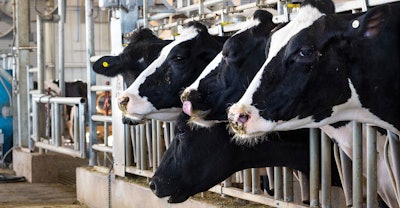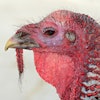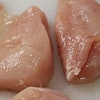
Since the H5N1 virus was first detected in Canada in December 2021 and has since spread to poultry flocks throughout America, people have commonly referred to this virus as highly pathogenic avian influenza (HPAI).
However, Kay Russo, DVM, MAHM, DACPV, believes now that the virus has appeared in dairy cattle in the United States, people need to be more intentional with what they call it. Russo explained why on April 5, while speaking during the webinar, “Managing Novel Disease Introduction and Biosecuity Practices to Protect Herd Health.”
“In my opinion, the disease in cattle at this point should not be referred to as highly pathogenic avian influenza,” said Russo. “I believe it can no longer be considered highly pathogenic avian influenza, given its low mortality, and the fact that it was isolated from a bovine source. It should simply be referred to as either H5N1, or perhaps low pathogenic bovine influenza, at this point in time.”
As the technical services manager, dairy and poultry for Novonesis, Russo has animal health expertise with both species, but she pointed out that the opinions shared by her during the webinar were hers and didn’t necessarily reflect those of Novonesis.
Highly pathogenic versus low pathogenic
Pathogenicity is defined by what a specific virus does to the animals it infects, Russo explained. This is also referred to as the virus “pathotype”.
When it comes to H5N1 in birds, there are both highly pathogenic strains and low pathogenic strains.
She showed a picture of poults that had been infected with a low pathogenic strain. Russo pointed out that the birds in the picture were still “up and around” and some were “puffed out a little bit.” One bird, with its mouth open, may have been experiencing some respiratory distress.
“They’re probably not feeling the best, but by and large, they’re still standing there and they’re looking at you,” she said.
Then she showed a picture of a turkey house that had been infected with a highly pathogenic strain, and birds in that picture exhibited high mortality levels.
In poultry, with low pathogenic strains, the virus is really restricted to the respiratory tract and the gastrointestinal tract, Russo said. The viral proteins in a low pathogenic strain in poultry are cleaved by enzymes primarily in the respiratory tract and the gastrointestinal tract, restricting infection to those sites. However, with highly pathogenic variants, the viral proteins are cleaved by enzymes throughout the body, allowing the virus to infect cells in multiple organ systems, which ultimately causes systemic disease and can be fatal.
Based on those definitions, the bovine cases of H5N1 would more accurately be defined as a low pathogenic pathotype.
While it may be the case that up to 10% of the cattle in the herds are being infected, the affected cattle are not showing significant mortality, she said.
Pathogenicity varies by species
Every time influenza infects a new host, it can mutate. If allowed to infect new hosts freely, virus mutations may eventually render it more pathogenic to cattle. This has been seen previously with low pathogenic avian influenza outbreaks that were less intensively controlled. This is why it will be essential to manage the susceptible populations in the herds to reduce viral cycling and mutation. Russo cautions that while this strain may be classified as low pathogenic in cattle, it is still highly pathogenic in poultry.
Because of this, she urges all dairy producers to be considerate of poultry producers.
“When considering moving cattle and the shedding of the virus, we need to keep our neighbors in mind. We need to allow them to keep their flocks safe, too,” she said. “The poultry people and the cattle people need to come to the same table and decide how to navigate this going forward.”
View our continuing coverage of the global avian influenza situation.


















